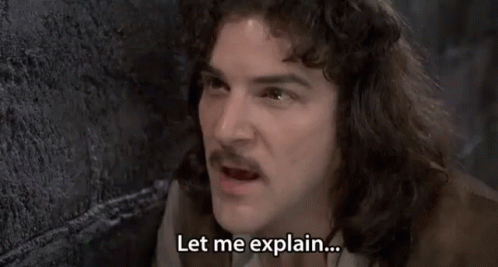5 Years Check-in: Half a Decade of Pursuing FIRE
I first specifically learned about financial independence (FIRE) in the fall of 2016, which was after graduating college in the spring and a few months into my first post-college job. It was around that time I began officially budgeting and figuring out investing (tl;dr: VTSAX and chill). That means now, in fall 2021, we’re right at the 5 years’ mark of me in my pursuit of FIRE. By following the tenets of the FIRE movement, how well did I make out?
Notes: I only had an impressive salary for two of those years; the other three I was making between $30k and $60k a year. Out of the funds across my different investment accounts, ~90% of them are in index funds tracking the S&P 500. (Here’s why.)
The Hopeful Beginnings
It helps to know the circumstances around the start. We now turn back the clock to fall of 2016. Pokémon Go was all the rage, the Rio Olympics wrapped up mere weeks ago, and the United States joined the Paris Accords… just in time for global CO2 levels to hit 400 ppm. The biggest headlines about Trump were his comments about women. (Remember that?) No one associated the word “pandemic” with anything beyond a low-rated TV movie and a couple Bill Gates interviews.
Fall of 2016, for me, meant I was 22 years old and a few months in to my first full-time job as a college grad. I was still months away from officially losing my “temp worker” status and, thus, making $15 an hour. Most importantly, however, was this year marking the beginning of my path to wealth as guided by the FIRE movement. Out of fear I’d go broke and hope for the future, I painstakingly learned the basics during that fall, getting a budget together and building an emergency fund.
There’s some other interesting parts about 2016 and the FIRE movement I should mention. That year, there were quite a few discussions about the efficacy of FIRE moving forward. At the time we were in the third longest bull market ever, which was enough for many to vocalize their fears about future returns.
I’m seeing those same fears aired out nowadays as well around newbies. While I can’t really see the future (despite evidence to the contrary) I can draw comparisons between the fears from five years ago and the fears today. Despite these warnings of a looming crash, I went on ahead with the advice of investing and reaching a higher income. How did that advice play out for me over a five-year span?

Summed Up
What’s pursuing FIRE gotten me after five years? Well, a massive amount:
- Over a quarter million dollars net worth (at $270k at the time of this writing)
- A paid-off car
- A 2 bed apartment I rent by myself
- Multiple trips in 2021 alone: flights to Los Angeles and Texas; several road trips to Maine, Vermont, and New Hampshire
- Two job changes to increasingly better roles/teams
- Better mental health: zero stress about finances
- Content for an award-winning blog
- Awesome friendships with others into finance writing
- Countless adventures
- Near-guaranteed retirement (CoastFI FTW)
I’ve also helped quite a few other 20-somethings (dozens!) improve their money management and better refine their financial goals/dreams. It wasn’t without hiccups along the way – just like life in general – but overall I’d say this was the most life-altering decision for the better I’ve ever made in my 27 years.
Numbers
When I started out I was maybe 4 months in to my first full-time job after graduation. I had maybe $5,000 saved up at that time from both that job and the weekend waitressing.
Fast forward to five years later when I’m sitting at over a quarter million dollars. Averaged out, that’s the equivalent of saving over $50,000 each year. Mind you, half of those years had me in the $50-60k salary range.
Obviously, the stock markets were a big impact on how well I did; if it was some huge Depression-era slump I wouldn’t have made out so nicely. But I also didn’t know it would work out so well, either. The bloggers and forum lurkers told me as much, too: they don’t know how things are going to look for FIRE in another year, let alone five years.
That prepped me for times when things didn’t go so well. 2018 had flat growth, delivering something between 0% and negative 6% returns year over year (YoY). It was annoying as hell to watch my net worth grow at a glacial pace, boosted only by my paycheck savings. But hey, growth is growth and it was still a huge chunk of change. Even better was when it steeled my nerves for the huge COVID cliff in 2020.
There goes my hard work…

I still remember being at my work office, logging in to Mint during a break, and seeing my net worth had dropped 40%. It didn’t get back to its previous high until July 2020, four months later. When this recession finally happened, I thought I’d feel some kind of anxiety or doubt in my game plan. As a pleasant surprise, I never did. Others have gone down this road before and have already told me to expect this, to keep my cool, and to trust the numbers will go up again. Thanks to their generous advice I watched my money go nuts very quickly, reaching a $150k net worth in August 2020 and then $250k just one year later.
Can I Stop?
Here’s another wild card: thanks to pursuing FI in my 20s, I have a helluva lot more options because my investments have a lot more time to grow than your average older adult. Said options include straight-up abandoning any frugality measures and blowing all the money I earn. As I noted in my first article ever, you “only” need to reach a $100,000 net worth in your 20s to become a millionaire at retirement age. Five years isn’t that long at all to build this up. It’s very doable even on an average salary.
According to my friends at The Fioneers, I’m in a great position for SlowFI (aka, taking your time to reach full financial freedom to get some of that now). With my current net worth I could comfortably withdraw about $10,000 each year to cover my expenses. That means, if I went for a job with less hours, I’d just need to generate $20,000 a year in post-tax income to make it make sense. That would translate to a part-time (20 hours/week) role paying $20 an hour, or a 30 hours/week role paying $12.85 an hour after taxes. There’s obviously more calculations to go into this if I was serious about taking this on (Health insurance! Moving! Dramatic office goodbyes!) so this is no more than a thought experiment. Albeit an encouraging one.
My priorities have me continuing to save and invest for the foreseeable future, so I’m not likely to go down this path. What it’s good for is assurance in case I’m otherwise forced to, whether for health reasons or some other bombshell. Much of my stress-free life is through knowing my life won’t go kaplooey if something terrible happens.

See how calm he is the whole time that melon is combusting? That’ll be me, coolly chilling while dealing with whatever just exploded.
The Next Five Years on the Path to FI
Assuming all goes decently well for the next five years, I’ll be in an even better position. That means fast-forwarding to the far-off year of 2026, when I will be 32 years old. My spreadsheets tell me that I could be worth anywhere from $380k to $715k depending on my savings rates; this also assumes I do not find a better-paying job or get further generous bonuses. With all else being equal the average across all projections is achieving a net worth of $563k (which would make me NewGrindFI). That means I could safely withdraw about $22,000 per year for my expenses. If I hit that $715k projection I can withdraw almost $29,000, which means I’d only need one more year to pad my accounts before hitting total financial independence.
Should I figure out a way to lower my expenses to a $20k annual spend, I could pull a Purple and retire when I’m 30 years old in 2024. My calculations tell me I’ll be worth half a million dollars when I’m thirty.
So. There’s that too.
The biggest takeaway is this: in every way, shape, and form, my pursuing financial independence has made my life better. While I’ll obviously need more than 5 years to hit the ultimate FI goal, this time has more than paid for itself. Now I can enter my 30s and beyond with many privileges others starting from the same hometown/university/career beginning will not. Even better, I’ve now got life skills I wouldn’t have gotten so good at otherwise, skills that will serve me well for the rest of my lifetime. And that lifetime? One we can safely say will be full of dream achievement and goal fulfillment. One that’s beautiful, breathtakingly exciting, and – now – well within my reach.
Couldn’t have done that without the first five years. Check-in gives this the green light for the next.


I love these lookbacks, especially if the present day is feeling particularly rough. It’s such a good reminder that staying the course for certain financial habits will bear fruit over time.
I always wondered what it’d look like for people to have encountered the idea of FIRE early in their career, so your summary is neat to see from that perspective too.
One of the main reasons I started this blog was so others my age would see someone focusing on the beginning. It’s not the most encouraging thing to see many making 6+ figures in the FIRE space when you’re still on an entry-level salary, or worse. But emphasizing these early years means *so much more* possibilities later on!
Remember though, a million dollars at conventional retirement age is only a quarter million dollars in spending power in your early twenties. In my case inflation devalued the US dollar almost exactly by a factor of 4 between 22 year old me and 60 year old me. So if $250,000 is enough to retire on now then a million should be when you are “mature” like me. That was based on the actual inflation rates, if you assume lower ones like the 3% people often use then it will derate future money by a factor of 3 instead of 4 giving you the buying power of $333K which is much better. Of course at the rate you are going Darcy, you are going to have all the money. I suspect you’ll always make money throughout your life even when you don’t have a real job, like I have in the six years since retiring. Just can’t help myself!
My calculations all use inflation as part of the equation so rest assured, that million milestone is in today’s dollars! (Good thing, too, what with these high inflation levels we’ve got going on in 2021.) I sure hope I’ll be in your shoes one day Steve!
As someone who is FI according to the internets but keeps his mouth shut (generally), I’m going to posit that the idea of “Slow FI” is a strawman argument.
1.) Only reaching ‘FI’ levels wealth (say, 1.5M) by age 65 generally means that your consumption is so high that you’re living off far more than $45k annually. If your ‘FI Goal’ is 1.25M, then you need to invest all of $7000/year at 7% return for 40 years, which means you’ll be spending 50k-120k per year over the course of your career. None of which are supported by 1.25M. Ergo, not FI. This is literally the point of the “Shockingly Simple Math” of financial independence!
2.) What you think you’ll need to retire when you’re 25 is likely far less than you’ll want when you’re older (speaking from personal experience, and I’m only in my mid thirties). When you’re starting out a 4% withdrawal rate sounds impossible, so it’s ambitious enough. Once you reach that number with historically high CAPE ratios you’ll feel nervous about 4% and reduce to maybe 3.3%. Now your Coast FI “wealth” took a haircut, and you’re not FI at all!
3.) Typical FI trajectories are lifestyle engineering to minimize market return risk. If you’re almost FI at 35 and the market tanks, no big deal, work for a few more years. Your savings rate is astronomical and you’re not very dependent on market returns. Two or three years later you’ll have surpassed your original goal. If you’re almost Coast FI at age 64 and the market tanks, you’ll be in bad shape. With a lousy Coast FI savings rate you’ll be working until 75 to recover from that bear market.
3.) Most people touting ‘Slow FI’ as a huge accomplishment are trying to justify recent life decisions that dramatically reduce their savings rate and/or greatly inflate their liabilities. “Everybody wanna be a bodybuilder, nobody wanna life no heavy-ass weights”. Professional bloggers whose brand if built on FI can’t well admit that FI is no longer a priority for them. Pivot to promoting Coast FI, now your brand is safe and you can spend all your money! After all, a Chase credit card, blog, and podcast are really what make you financially independent.
Conclusion, ‘Slow Fi’ is for people who want to be FI but won’t be.
Sorry about the rant, none of this is meant to be directed at WWG! Love your blog, and keep up the good work!
Thanks for the end note, Big Bob. I do love me some debate so I’ll take this as an opportunity to exercise that muscle.
Point #1 ignores several important facts: most people see yearly costs dramatically decrease after retirement, most people only make around 50 grand a year, and most people don’t have access to the capital needed to overspend for extended periods of time. The math you cite just isn’t adding up.
Point #2 makes as much sense as me telling you I know exactly what the future holds. I don’t, not even if I’m using CAPE ratios, yield curve inversions, inflation rate, or any number of other economic indicators. That’s why I’m saving way beyond the average for a richer future (and a helluva lot more options available).
Point #3 completely dismisses the idea of mitigating risk, such as using a cash cushion, bucket strategy, yield shield, geographic arbitrage, and other possibilities the FIRE community cooks up. Sequence of return risk is an oft-discussed topic and there are plenty of resources to determine what’s right for someone’s unique financial picture.
Your second point #3 is entrenched in more emotion than logic; CoastFI will still net these unnamed bloggers/podcasters-who-use-credit-cards a lot more money in the long run via investment returns alone (into the six figures, if not seven). Keep in mind only a third of Americans can correctly answer tests on basic financial literacy. With so little financial understanding out there, especially for those my age and younger, I’m not happy deriding the educators out there being honest about changing priorities. Just because something isn’t right for you or me, doesn’t mean that’s true for everyone else.
It’s important to share criticism with financial writers like myself, especially if you believe I’m spreading misleading or harmful information. All I request is getting criticism about myself or my work when you post here. There ain’t much I can do about what other folks are saying, you dig?
I’ve been following your blogposts on and off for a few months now and honestly this reflection has me sold on starting ASAP. I’m halfway through my college degree working part time to pay for tuition. I’ve always told myself I don’t make enough to start thinking about FIRE seriously but I think I’m going to dive into research and get going. I don’t know where to start but I’m ready!!!
WOOHOO!!!! This is freaking awesome dude! I have a lot of articles on different aspects of getting started (budgeting, investing, career growth, etc) but for a general overview I really like the one Playing with FIRE put out. Check that out to get started where you are, they make it really easy to understand the first steps 🙂 Can’t wait to hear more!
Pingback:Dreaming Is a Luxury Few Can Afford - We Want Guac